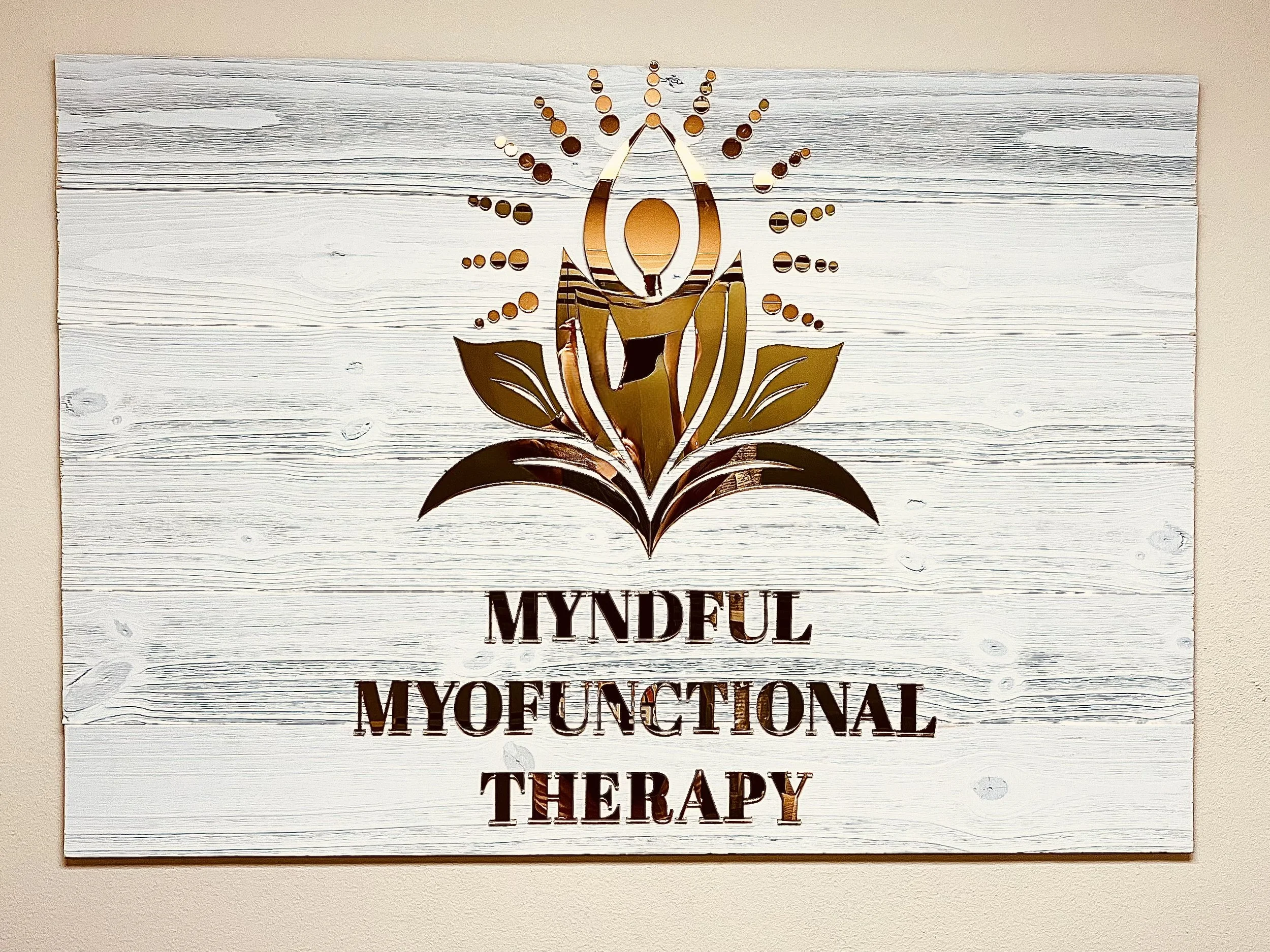
Get In Touch
Myndful Myofunctional Therapy 1902 120th Pl SE Suite 103F Everett, WA
1902 120th Pl SE Suite 103F Everett, WA
Please Note: If office hours are not conducive to your schedule, p[ease note requested time frame to be accommodated in your scheduling form
FAQs
What is Myofunctional Therapy?
Myofunctional therapy is a specialized form of oral physical therapy that focuses on the muscles of the mouth, tongue, and face. It involves exercises and neuromuscular retraining to address issues with breathing, speaking, chewing, and swallowing. The goal is to improve the function of these muscles and correct any improper patterns.
Who needs Myofunctional Therapy?
Patients with oral dysfunction that impact chewing, swallowing, speaking, breathing and sleeping. This can show up as restricted tongue movements and function, mouth breathing and open mouth posture, tongue thrust swallow pattern that impacts bite and alignment of teeth, sleep disordered breathing, support for tongue tie releases and more.
What is a tongue-tie?
An oral condition, also known as ankyloglossia, which involves a short or tight band of tissue connecting the underside of the tongue to the floor of the mouth and can result in restricted tongue movement. This restricted movement can cause dysfunction and impact feeding, speech, dental health, breathing and sleep. If the tongue has restricted mobility in young children it may hinder proper growth of the jaw and cause long-term orthodontic problems and possibly airway issues.
Are there other types of oral ties?
Yes! There are 3 areas in the mouth that can be assessed as a “Tie/Tether”.
Tongue- Tie (Ankyglossia)
Lip Tie (Labial Tether)
Cheek Tie (Buccal Tie)
When we assess degree of tongue ties we look at tongue range of motion ratio (TRMR) shown below:
Figure 1: Tongue-Tie (Ankyglossia)
FIGURE 2. Lip Tie (Labial Tether)
FIGURE 3. Cheek Tie (Buccal Tether)
Can a tongue-tie impact breastfeeding?
Yes, a tongue tie or other oral tissue tether can make it very challenging for the baby to latch on and effectively remove milk. This can lead to frequent and inefficient feeds, poor weight gain, nipple pain for the mother, and reduced milk supply.
Can a tongue-tie impact bottle-feeding?
Yes, many mothers that do struggle with nursing and latching concerns can also experience challenges with their baby and preference of bottle and nipple style. Generally, baby will choose the bottle and nipple that requires the least amount of energy and effort to dispense the milk/formula. This is often due to a history of unsuccessful efforts to nurse/feed where baby learns quickly they do not want to have to work as hard. Baby will find a preference of feeding that is easiest to support them and their tethered oral tissues, which can often be overlooked, as baby is still gaining weight. However, this style of passive feeding- with an easy flow nipple that does not require much oral-facial muscular contraction can create a cascading effect of events as baby grows and develops.
Can myofunctional therapy be used with infants?
Myofunctional therapy and supportive services can be incredibly profound for mothers and caretakers of infants with both nursing and bottle-feeding challenges. The program looks much different for this age group and focuses on mom and empowerment through education and hands on experience with baby. Painful nursing is not normal, although It is common. Sadly, many mothers are gently dismissed when they voice their discomfort and concern for themselves and their babies. If baby is gaining weight, then baby must be feeding well, right? The answer is no!
Proper infant oral function is essential for growth, development and sustainability for both mom and baby. A tongue-tie or other oral tissue tether may be a cause for concern and should be addressed. Not all tongue ties look the same. It is important that a specialist DDtrained in oral tethered tissues assesses your baby’s mouth.
How do you treat a Tongue-Tie?
Treatment is dependent on the degree of tongue restriction and dysfunction. Some patients have a tongue tie that does not impact their daily function. Other patients have a tongue tie that requires exercise based oral therapy with myofunctional therapy. Some patients do require a frenectomy (tongue-tie release) with laser or minimally invasive surgical intervention to release the tight band of tissue. This allows for improved tongue mobility and can help to facilitate improved function with the assistance of myofunctional services. For these patients myofunctional therapy is necessary to retrain the muscles before and after the procedure. It is crucial to work with patients before and after the procedure for improved patient experiences and increased success in patient treatment outcomes.
How is a tongue- tie (cheek tie or lip tie) released?
1) Laser Technology is generally the preferred technique (especially in that of infants and children) because it is often a very quick procedure and provides precision while ensuring minimal damage to surrounding tissues.
2) Surgical Intervention is sometimes required (more so in adults as there has been more maturation in tissues) as the tongue tie is not a simple release of banded/tethered tissue, but also involves the tongue muscle. This would be assessed and discussed in detail at the time of your tongue tie evaluation with a referred, trusted provider.
If I need a tongue tie release/frenectomy, what can I expect after?
Post-procedure care is a crucial aspect of the tongue tie treatment with close support with your myofunctional therapist for wound care management. This support and counsel are essential to prevent reattachment and to maximize the benefits of the procedure.
Following a tongue tie release you can expect some discomfort and potential swelling under the tongue. Very little bleeding occurs and pain management is controlled with over-the-counter pain relievers like Tylenol. For the first couple of days a soft diet are often recommended. Stretching and wound care exercises of the tongue are also usually part of the aftercare to prevent reattachment and ensure proper healing.
Does every myofunctional therapy patient need a tongue tie release?
NO! Many patients do not require a tongue tie release procedure, but within the comprehensive evaluation and beginning phases of therapy we will discuss if it is in the professional opinion that fully successful therapy treatment depends on a tongue tie release. This will provide a cascading opportunity for a more relaxed, more functional and more trainable tongue to allow us to attain our goals.
Do you perform the tongue tie release if my child or I require one?
NO! We will discuss in detail what can be expected for a tongue tie release procedure if necessary, and you will be referred to a very trusted colleague that will perform the tissue release. I will be working very closely with you to prepare for the treatment if we decide together this is the most therapeutic choice for you! We will also work closely together following the procedure and throughout the healing process and ongoing therapy services.









